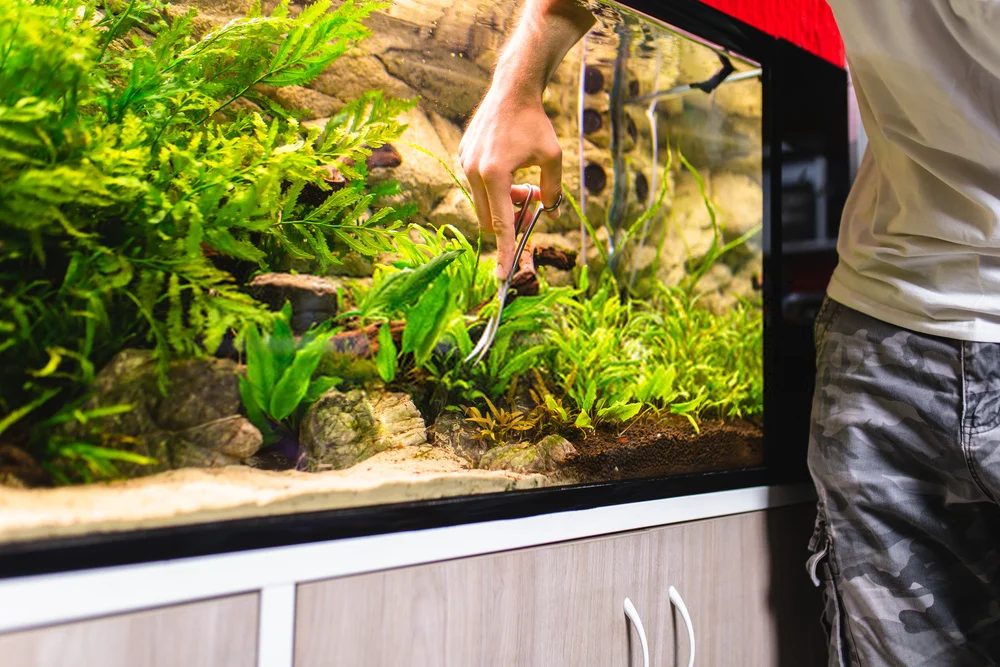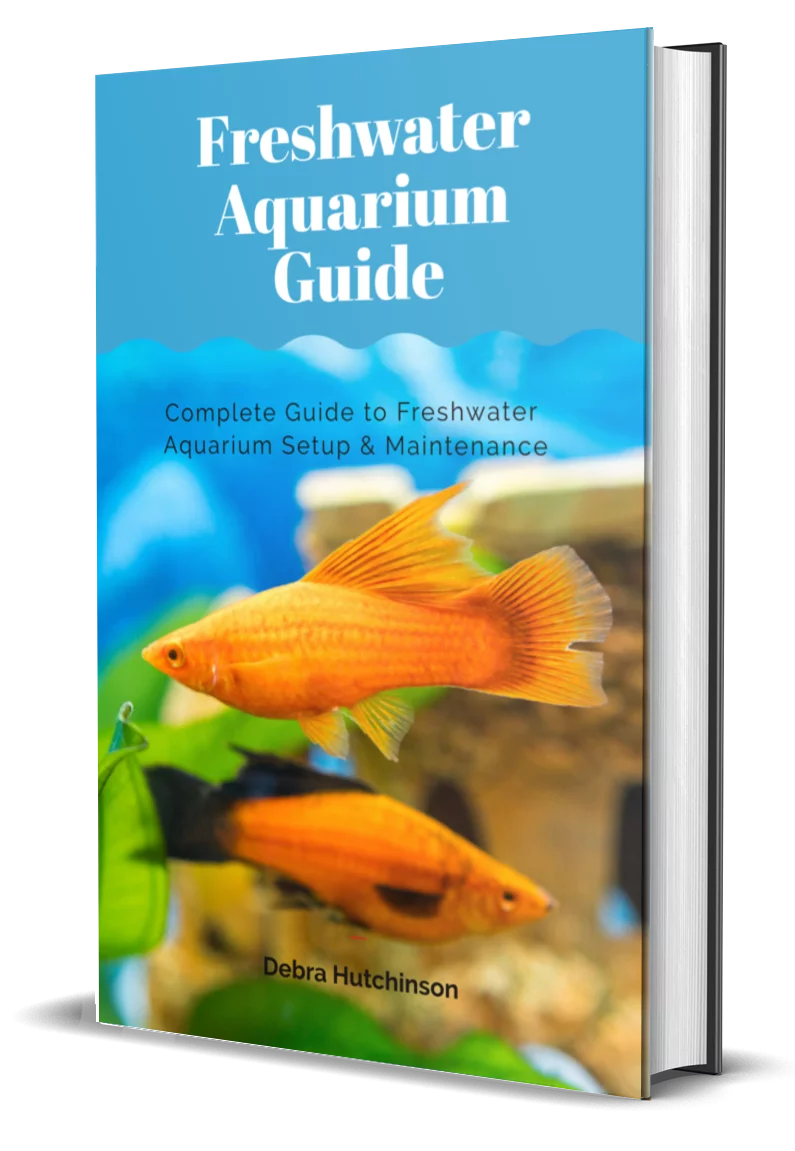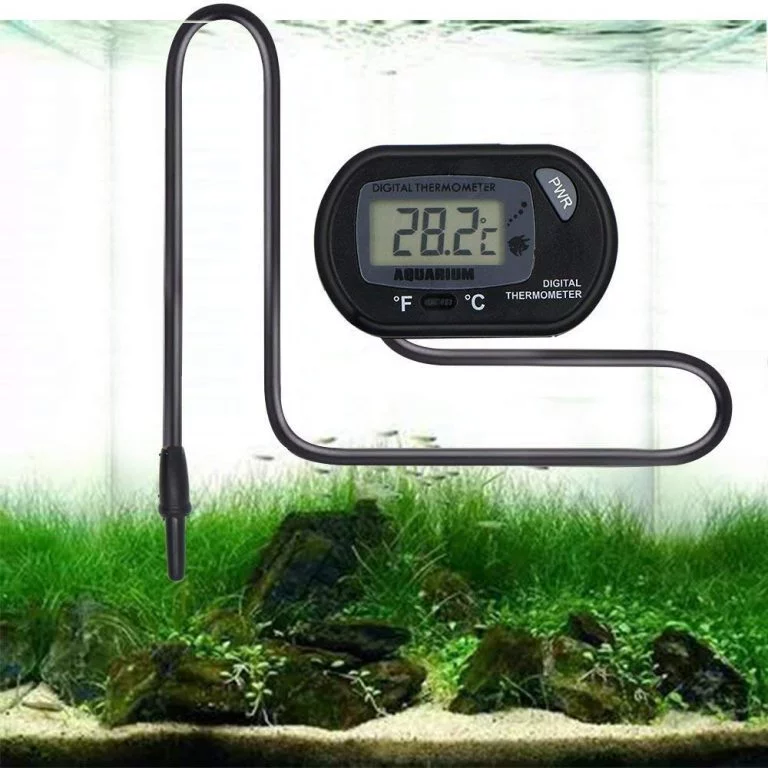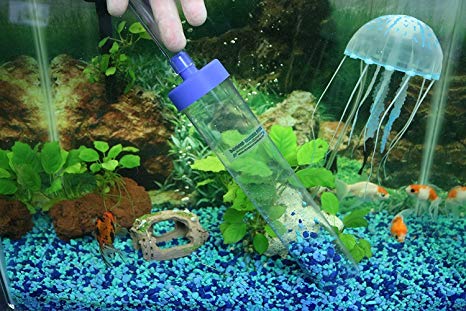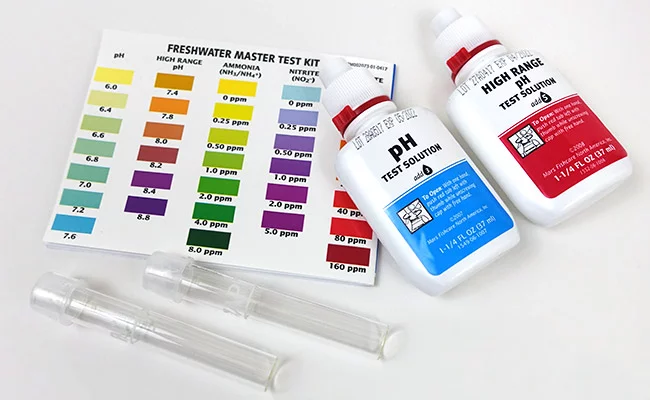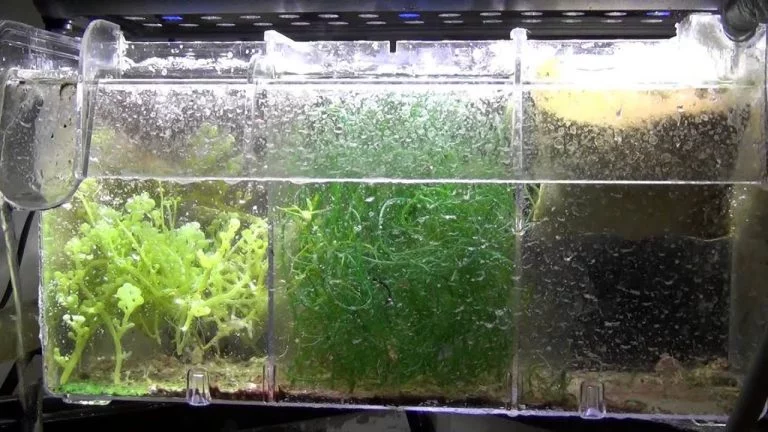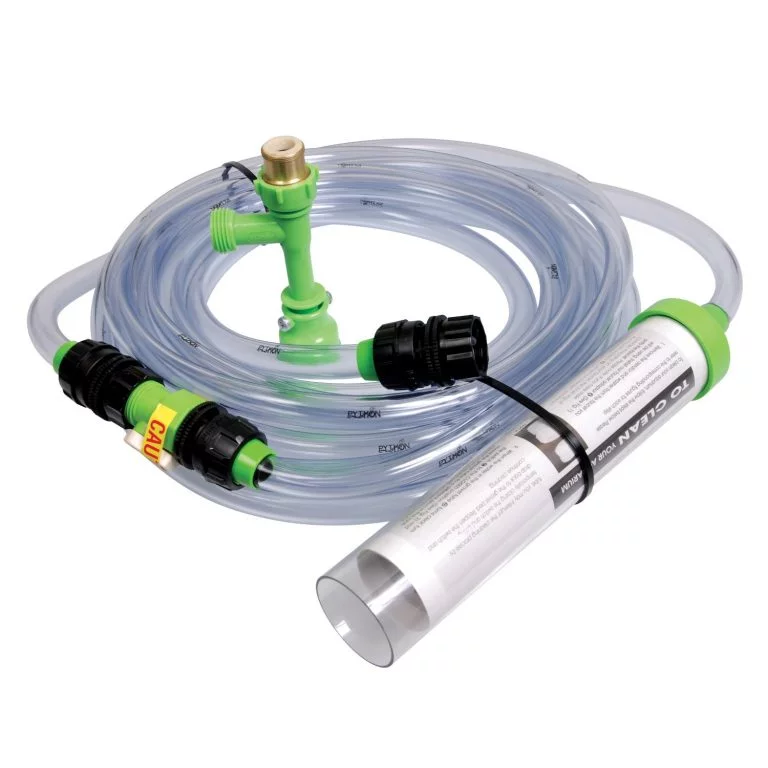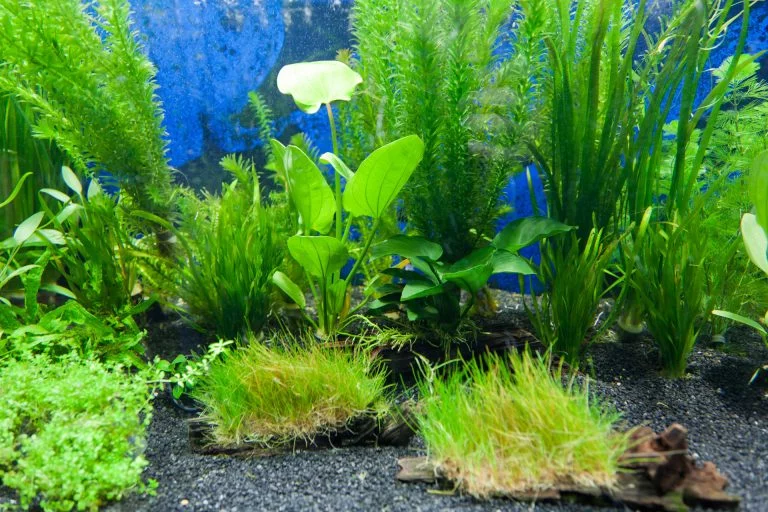How to clean your Fish tank
Housing a fish is a very tender and complicated thing. It has three basic requirements as love, care and knowledge.
Setting up your fish tank is easy and can also be done with the help of an expert when you buy your fish tank but the maintenance of the fish tank is what you need to take care of personally for happier and longer living fishes.
Why it is important to keep a fish tank clean?
Fish tanks need to be cleaned regularly because dirty water can cause fish to get sick. Fish are sensitive to their environment, and a dirty tank can lead to disease and sickness. In addition, a dirty tank can also cause the water to become stagnant and full of algae. A clean fish tank is important for the health and happiness of your fish.
How often do you need to clean a fish tank?
You should clean your fish tank at least once a week. This will help to keep the water quality high and prevent the build-up of toxins. If you have a lot of fish, you may need to clean your tank more often. You can tell if your fish tank needs to be cleaned if the water is cloudy or the substrate is dirty. You should also clean your fish tank if you notice any algae growth.
Things You’ll Need To Clean Your Fish Tank
Assuming you have a basic understanding of fishkeeping and the equipment needed to maintain a healthy aquarium, below are some things you’ll need to clean your fish tank:
- A aquarium cleaning kit that includes an algae scraper, sponge, and/or fish net
- A bucket or other container to hold dirty water
- Freshwater aquarium salt
- An aquarium vacuum
- A dechlorinator (if using tap water)
- Water conditioner (if using tap water)
- A siphon (optional)
- A new fish tank filter (optional)
- New fish tank gravel (optional)
- Aquarium-safe cleaner or white vinegar (for stubborn algae)
- A paper towel or old rag (for cleaning glass)
- A soft toothbrush (optional, for cleaning smaller areas)
Things To Do Before Cleaning Your Fish Tank
Placing the fish in a temporary tank.
Fishes are sensitive to the atmosphere around them and slightest change is noticed and responded.
For cleaning the fish tanks one should create a similar water environment in terms of temperature, pressure and salt level to avoid the disturbance of fish’s behavior.
- Create a similar tank of preferably same size as the one you breed in it in.
- Keep the water temperature same in both the tanks before you place the fish. (Pro Tip – This Will help “Best Thermometers For Your Fish Tank Guide“)
- Check for the salt level of the tank the fish is currently in and level it in the other tank too.
How to Clean Your Aquarium?
Below are a few steps you need to follow to clean your fish tank:
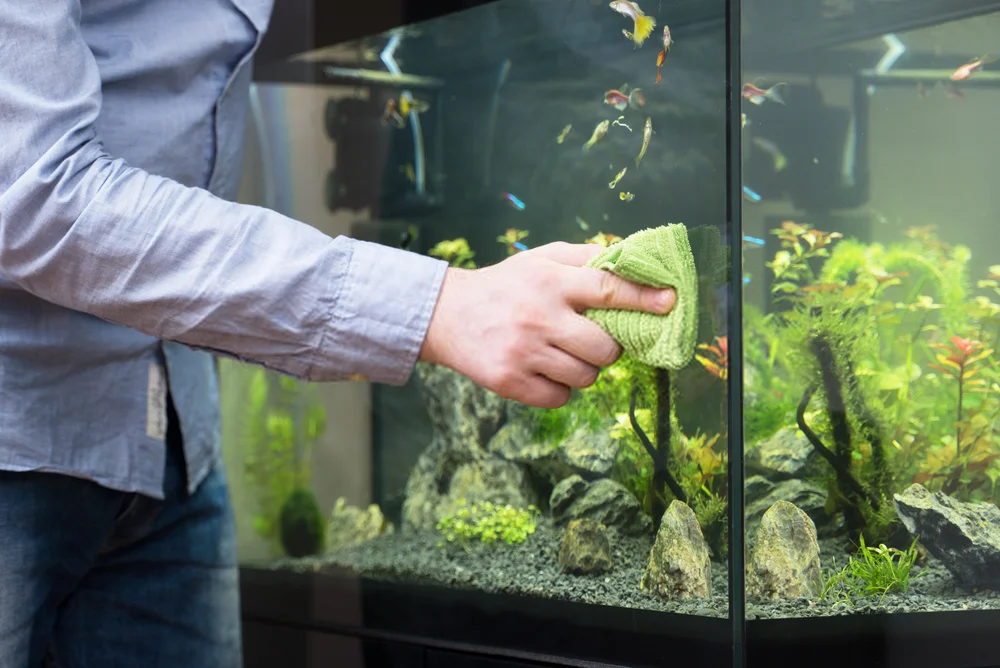
Step 1: Test the Water Quality
It is important to test the water quality before you start cleaning the fish tank. This will help you to know what kind of cleaning solution you need to use. There are many different ways to test the water quality.
The most important things to test for are ammonia, nitrites, and nitrates. Ammonia should be at 0 ppm, nitrites should be at 0 ppm, and nitrates should be below 20 ppm. If any of these levels are high, you will need to do a water change before you start cleaning the fish tank.
To test for ammonia, you can use an ammonia test kit. To test for nitrites, you can use a nitrite test kit. To test for nitrates, you can use a nitrate test kit.
Once you know the levels of ammonia, nitrites, and nitrates in the water, you can start cleaning the fish tank.
Step 2: Remove Algae
Algae can be unsightly and harmful to your fish, so it is important to remove it from your tank on a regular basis. There are a few different ways to remove algae from your fish tank. The best way to remove algae from your fish tank is to vacuum it.
Vacuuming the algae from your fish tank is the most effective way to remove it. To vacuum the algae, you will need to Turn off the equipment and then remove the fish from the tank. Next, you will need to siphon out about 30% of the water in the tank. Now, you can vacuum the substrate and get rid of all the algae in the tank. Finally, you can refill the tank with fresh water and turn on the equipment.
Step 3: Prune the Plants
Just like you need to trim your own hair and nails, your aquarium plants need a little bit of grooming too! By pruning your plants, you are encouraging new growth, removing dead leaves and stems, and improving the overall health of your plants. Pruning also helps to keep your aquarium looking neat and tidy. So how do you go about pruning your aquarium plants? Read on to find out!
The first step is to choose the right tools for the job. You will need a sharp pair of scissors or plant trimmers. Make sure that the blades are clean and free of any rust. Next, you will need to identify the areas of the plant that need to be trimmed. Look for dead leaves, yellowing leaves, or browning leaves. You should also remove any stems that are growing out of control. Once you have identified the areas that need to be trimmed, it’s time to get to work!
Start by trimming off any dead leaves or stems. Dead leaves can harbor bacteria and can cause problems for your other plants. Once you have removed all of the dead material, take a look at the overall shape of the plant. If the plant is looking leggy or scraggly, trim back the longest stems to encourage new growth. If the plant is looking too bushy, trim back some of the side branches to create a more balanced shape.
When you are finished trimming, it’s important to remove all of the trimmings from the tank. Trimmings can decompose in the water and release toxins that can be harmful to your fish. You can either throw away the trimmings or compost them.
After you have finished pruning your plants, they should look healthy and vibrant. Pruning is an important part of plant care and should be done on a regular basis. By taking the time to prune your plants, you will be rewarded with a beautiful and healthy aquarium.
Step 4: Turn off Equipment
As mentioned in the previous step, it is important to turn off all equipment before starting to clean the fish tank. This will prevent any accidents from happening, as well as preventing water and chemicals from getting into the equipment. Once the equipment is turned off, you can start to clean the fish tank.
Step 5: Vacuum the Substrate
It is important to vacuum the substrate in your fish tank because it can remove debris and uneaten food that can be harmful to your fish. Vacuuming the substrate is also important because it can help to aerate the water and prevent anaerobic bacteria from growing. To vacuum the substrate in your fish tank, you will need to use an aquarium vacuum cleaner.
When vacuuming the substrate, it is important to be gentle so that you do not damage the roots of the plants in your aquarium. It is also important to move slowly so that you do not stir up too much debris. Start by vacuuming the area around the plants first and then move on to the open areas of the aquarium. Vacuum until the water in the vacuum cleaner is clear.
Step 6: Clean the Filter
The filter is an important part of the fish tank because it helps to keep the water clean. You should clean the filter every month to make sure that it is working properly. Here is how you can clean the filter:
First, you need to remove the filter from the fish tank. To do this, you need to unplug the filter from the power outlet and then remove the hoses that are connected to the filter. Once the filter is removed, you can proceed to the next step.
Step 7: Refill the Water
It is important to use clean water when refilling your fish tank. The water in your fish tank needs to be clean so that your fish can stay healthy and happy. You can use a water filter to clean the water before you add it to the fish tank. This will help to remove any impurities from the water.
You should add the water slowly so that the fish are not stressed. Adding the water too quickly can cause the fish to become stressed and this can be harmful to their health. When adding the water, make sure to do it slowly and carefully so that the fish are not disturbed.
Step 8: Turn on Equipment
Now that the substrate is vacuumed and the filter is clean, it’s time to turn on the equipment. Turning on the equipment is simple, but there are a few things you need to keep in mind. Make sure to follow these steps when turning on your equipment so that your fish tank stays clean:
-Start with the air pump. The air pump is responsible for oxygenating the water. If you have an aquarium with live plants, the air pump is also responsible for moving the water and giving the plants the nutrients they need.
-After the air pump, turn on the filter. The filter will help to remove any Ammonia, Nitrites, and Nitrates from the water. It’s important to have a good filtration system in place so that your fish can stay healthy.
-Finally, turn on the heater. The heater will help to keep the water at a consistent temperature. This is important because fish are sensitive to changes in temperature.
Step 9: Wipe the Glass
It is important to wipe the glass of your fish tank on a regular basis. Fish tanks can get dirty quickly, and if the glass is not wiped, algae and other debris can build up and make the water quality poor. Wiping the glass also makes it easier to see your fish and enjoy them!
To wipe the glass of your fish tank, you will need:
- A cloth
- A bucket of clean water
- A sponge
First, wet your cloth in the bucket of clean water. Then, wring it out so that it is damp, but not dripping. Next, start at the top of the fish tank and wipe the glass in a circular motion. Work your way down the sides of the tank until you reach the bottom. Be sure to rinse your cloth often in the bucket of clean water to prevent dirt and debris from being transferred back onto the glass. When you are finished, use the sponge to wipe any spots that you may have missed.
By following these simple steps, you can keep your fish tank clean and provide a healthy environment for your fish!
Placing back the fish
- The most crucial part of the cleaning part is placing the fish back into the tank after cleaning.
- The same procedure as making the conditions of the cleaned tank similar to the one the fish stays in is required.
- Lower the pressure of the pump a little than before to let the fishes calm down for the slight changes they suffer from.
- Add aquarium salt to the tank to give additional relaxation to the fishes.
Important points to keep in mind
- Never use any normal cleaning products to clean the aquarium.
- The best time to clean the fish tank is in the late afternoon or early morning depending on the time the fishes take their naps on.
- Check for any sick fish before cleaning the tank.
- Maintain constant water atmosphere always to prevent trauma for the fishes.
- Change 1/4th of the water of the tank once in a week for longer gaps in between the proper cleaning sessions.
- Place one or two tank cleaning fishes which eat out the waste products of other fishes and the algae from the glass.
Some Informative Videos:
Conclusion On How To Clean Fish Tank
A clean fish tank is a happy fish tank! By following the simple steps outlined above, you can easily maintain a clean and healthy environment for your fish to thrive in. Trust us, your fish will thank you for it!
Topics Covered

